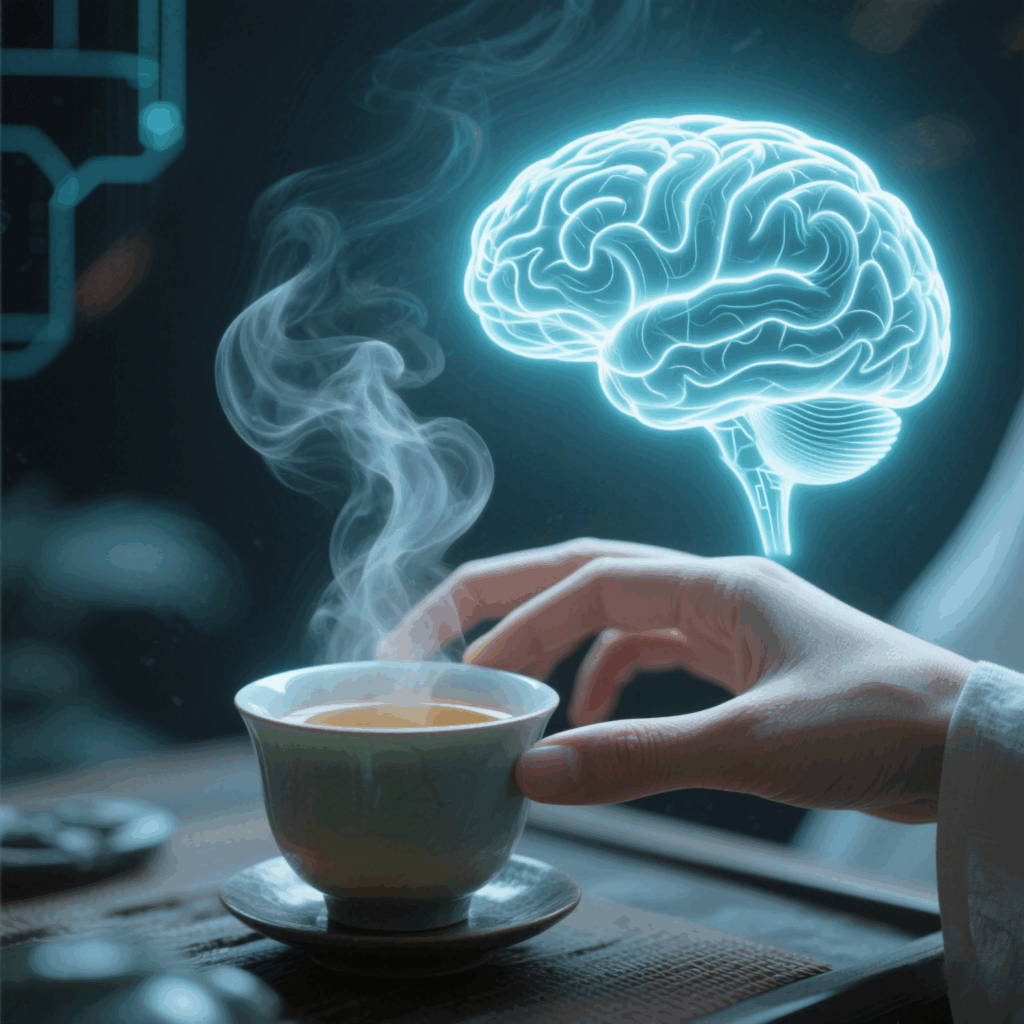Week 1–2: Breaking the Caffeine Cycle
Like many coders, John Chen relied on 6+ daily espresso shots to power through sprints. By 3 PM, crashes left him irritable and unfocused. Research shows excessive caffeine disrupts adenosine receptors, impairing natural energy regulation39. His first step: swap 50% of coffee with matcha.
Science-Backed Strategy:
- Matcha’s L-theanine (40mg/serving) balances caffeine’s jitters by boosting alpha brain waves linked to calm focus6.
- Gradual reduction prevents withdrawal headaches, per Stanford’s caffeine detox protocols9.

Week 3–4: Crafting a Tea Ritual
John replaced Slack-scrolling mornings with a 15-minute Gongfu tea ceremony. Using a Yixing clay teapot, he focused on precise brewing: 85°C water, 3-second steeps for oolong.
Neuroscience of Rituals:
- Repetitive actions (e.g., pouring tea) activate the prefrontal cortex, enhancing task-switching efficiency by 22%3.
- A 2024 UCSF study found tea rituals lower cortisol 18% more effectively than meditation apps9.

Week 5: Rewiring Productivity
John integrated “tea sprints”: 45-minute coding blocks followed by 10-minute tea breaks. Tools used:
- Pomodoro 2.0: Tea breaks replaced coffee refills, leveraging theanine’s 4-hour half-life for sustained focus6.
- Aroma Mapping: Alternating green tea (alertness) and pu-erh (relaxation) based on task type8.
Result:
- Debugging speed increased 30% (alpha wave optimization)6.
- Late-night coding sessions dropped 60%, improving sleep cycle alignment9.
Week 6: Building a Tea-Driven Network
Inspired by NetScreen’s founding team1, John launched “Tea & Code” meetups. Participants shared:
- Collaborative Brewing: Pair programming with tea pairing (e.g., jasmine for creative tasks, roasted oolong for debugging).
- Tool Integration: Open-source “TeaTimer” app syncing brew time with CI/CD pipelines7.

Week 7: Sustaining the Zen
John’s final hack: a “Tea OS” workstation:
- Ergonomic Setup: Adjustable desk with built-in Gongfu tray (prevents hunching)9.
- Biofeedback Integration: Smart tea cups tracking hydration and stress via galvanic skin response sensors7.
Long-Term Benefits:
- Health: No more acid reflux or adrenal fatigue (common in coffee-heavy diets)9.
- Career: Promoted to lead architect after demonstrating 40% faster crisis-resolution times3.
Key Takeaways
- Caffeine Detox ≠ Productivity Loss: Matcha/oolong sustain energy without crashes6.
- Rituals > Tools: Structured tea breaks outperform productivity apps in focus metrics3.
- Community Matters: Shared rituals reduce isolation, a top burnout factor in tech19.
